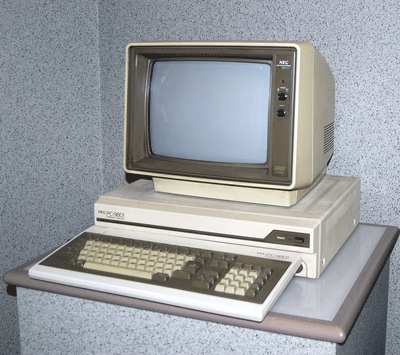
Main | Traditional Turn-based Role-playing Games | Tactical Role-playing Games
When fans of Japanese role-playing games think of the game genre, they most fondly remember the Japanese role-playing games that were developed during the 1990's. Classics such as Chrono Trigger, Final Fantasy IV, and Final Fantasy VI, but the origin of the genre can be attributed to Japanese PC games, which were popular between the late-1970's and the mid-1980's. The PC's that were most used during the 1980's were the NEC PC-8801 and the PC-9801; there was some competition from the Sharp X1, X68000, FM-7, FM Towns, MSX, and MSX2 as well. Japanese computers used Yamaha FM synthesis sound boards since the early-1980's, which allowed Japanese game composers in creating a variety of chiptune music. For the display resolution on Japanese computers, they were able to display 640x400, which was a higher resolution than those found on western computers. Such a higher display resolution was necessary in order to accommodate Japanese text, which in turn, influenced game design.

While the 1990's later became the defining decade where the most well-regarded Japanese role-playing games were made, the preceding decade was most known for the popular The Wizardry series. Other early Japanese role-playing games were influenced by visual novel adventure games. Companies like Square, Enix, Nihon Falcom, and Koei created visual novel adventure games before they moved on to developing Japanese role-playing games. To this day, visual novel style game design are used in Japanese role-playing games, as they are an effective method in telling an intriguing narrative.
In the early-1980's, Japan's role-playing games was the start where game developers flexed their sparks of creativity. It began with Koei's Underground Exploration and Pony Canyon's Spy Daisukusen, which was based on the Mission: Impossible series, and it replaced the traditional fantasy setting with a modern espionage setting. In 1982, Koei released The Dragon and Princess for the PC-8001. It was an adventure game that was about rescuing a kidnapped princess. Throughout the rest of the 1980's, such classics from the Dragon Slayers, Brandish, Dragon Quest, and Final Fantasy series were made.
What is known as the Golden Age of Japanese role-playing games are the 1990's, and much of that success were thanks to home consoles such as the Super Nintendo and the Sega Genesis, made by Nintendo and Sega, respectively. While there were many role-playing games developed during this time, I will focus on the key games that are the favorites among fans. Square is viewed as the company for developing truly remarkable and creative game experiences on the Super Nintendo. There are so many titles to name, but some classics are Earthbound (known as Mother 2 in Japan), Final Fantasy IV, Final Fantasy V, Final Fantasy VI, Final Fantasy VII, Dragon Quest IV, Dragon Quest V, Dragon Quest VI, and Chrono Trigger. With the transition to 16-bit graphics, Japanese role-playing games had improved visuals, and that allowed artists in creating awe-inspiring character designs and backgrounds.
The 1990's was the definitive decade where Japanese role-playing games where the most creativity was found, but great Japanese role-playing games were also created in the 2000's and 2010's, however, the well-regarded Japanese role-playing games were made at a less consistant rate. Square and Enix, two major Japanese role-playing game companies, eventually merged, and Square-Enix went on to make great games into the 2000's such as Final Fantasy X and Final Fantasy XII. While I cannot mention everything surrounding Japanese role-playing games between the 1970's and the 2010's, its entire history can be read about it here.